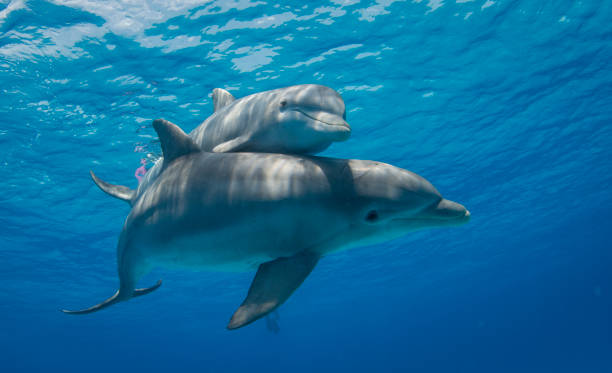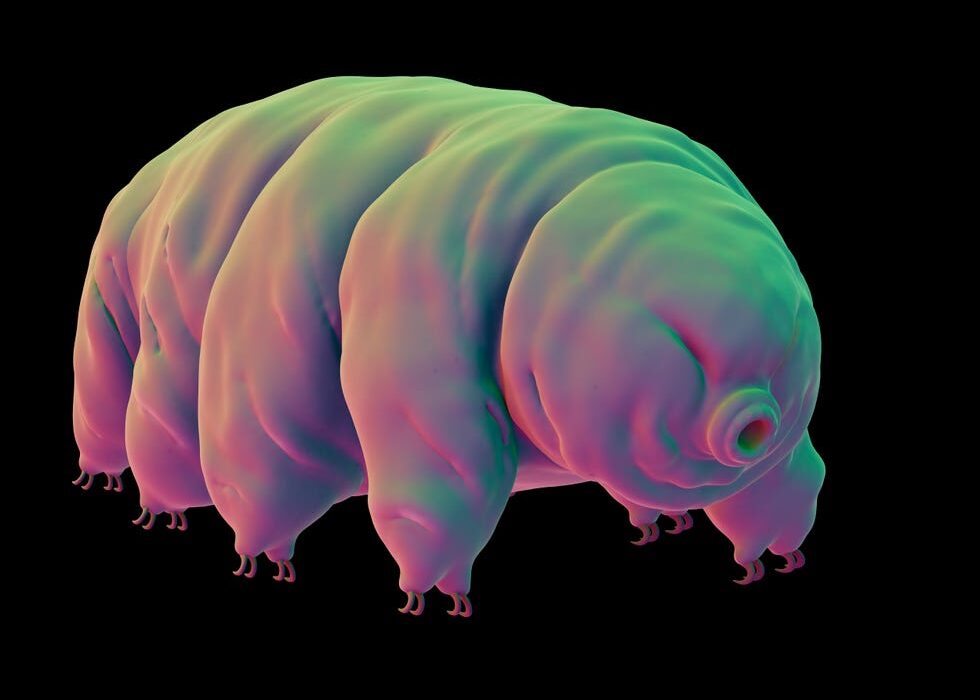Far below the surface of the ocean lies a world more alien than any landscape on Earth. It is a place of crushing pressure, freezing temperatures, and perpetual darkness—a realm where sunlight never penetrates and life has evolved in extraordinary, often terrifying, ways. This is the deep sea, the largest and least explored habitat on the planet, covering more than 60% of Earth’s surface and reaching depths of over 11 kilometers.
Despite the hostile conditions, the deep ocean teems with life. From translucent predators with bioluminescent lures to gelatinous creatures that drift like ghosts, the inhabitants of the deep defy our imagination and challenge our understanding of biology. These animals are not merely curiosities; they are living examples of evolution’s boundless creativity, perfectly adapted to survive where almost nothing else can.
Over the past century, deep-sea exploration using submersibles, remotely operated vehicles (ROVs), and high-tech cameras has revealed a universe of creatures that seem to belong to another planet. Each discovery reminds us that Earth’s oceans remain one of the final frontiers of exploration—and that we have only begun to glimpse the full diversity of life in the abyss.
The Hidden World Beneath the Waves
The deep ocean begins at a depth of about 200 meters, where sunlight fades into darkness. Below this, the ocean is divided into distinct zones: the mesopelagic (or twilight zone), bathypelagic (the midnight zone), abyssopelagic (the abyss), and hadalpelagic (the trenches). Temperatures in these regions hover just above freezing, and the pressure increases by one atmosphere for every 10 meters descended. At the bottom of the Mariana Trench, the pressure exceeds 1,000 times that at sea level—conditions so extreme that most life forms would be crushed instantly.
Yet, life thrives here in forms that defy imagination. Many deep-sea species have developed special adaptations to cope with these extremes: flexible bodies that resist crushing, slow metabolisms that conserve energy, and bioluminescence that provides light in the eternal night. Some even survive on chemical energy from hydrothermal vents rather than sunlight, forming ecosystems completely independent of the sun.
The deep sea is an evolutionary laboratory. Isolation and extreme conditions drive the evolution of unique traits—transparency, gigantism, glowing organs, and bizarre feeding mechanisms. The result is an array of creatures so strange that they seem more at home in science fiction than in biology.
The Anglerfish: The Deep Sea’s Living Trap
Among the most iconic deep-sea creatures is the anglerfish, a symbol of the ocean’s strange beauty and savagery. Female anglerfish are equipped with a bioluminescent lure—a glowing appendage that extends from their heads and dangles in front of their enormous mouths. This lure, produced by symbiotic bacteria living inside the fish’s body, serves to attract prey in the darkness. Unsuspecting fish and crustaceans are drawn to the light, only to be swallowed whole by the anglerfish’s cavernous jaws and inward-pointing teeth.
Even more bizarre is the anglerfish’s reproductive strategy. In many species, males are tiny compared to females—sometimes 100 times smaller. When a male finds a female in the vast ocean, he bites into her body, fuses with her tissue, and connects to her bloodstream. Over time, he loses his eyes, fins, and most of his organs, becoming little more than a living appendage that provides sperm when needed. This grotesque form of parasitic mating ensures that the female always has a mate in an environment where encounters are rare.
The anglerfish embodies both the horror and ingenuity of deep-sea life, where survival demands the most radical adaptations.
The Vampire Squid: The Eternal Denizen of the Deep
Despite its fearsome name, the vampire squid (Vampyroteuthis infernalis, meaning “vampire squid from hell”) is not a bloodsucker. It is a small, delicate cephalopod that drifts slowly through the oxygen-poor depths of the ocean, surviving where few others can. Its jet-black body, cloak-like webbing between its arms, and glowing blue eyes give it a haunting appearance.
Unlike most squid, the vampire squid does not hunt active prey. Instead, it feeds on “marine snow”—a continuous rain of organic debris that drifts down from the upper ocean. Using long, sticky filaments, it collects particles of dead plankton, fecal matter, and detritus, rolling them into balls and consuming them.
The vampire squid’s ability to live in near-zero-oxygen conditions is remarkable. Its blood contains an oxygen-binding molecule called hemocyanin, which is highly efficient even at low oxygen levels. It also conserves energy by moving slowly and using minimal muscle activity.
When threatened, the vampire squid does not squirt ink like its shallow-water relatives. Instead, it releases a cloud of bioluminescent mucus filled with glowing particles, confusing predators long enough to escape into the darkness.
The Giant Isopod: The Deep-Sea Scavenger
The giant isopod (Bathynomus giganteus) looks like a massive version of the common pill bug or woodlouse. Found at depths between 500 and 7,000 feet, it can reach lengths of up to half a meter, making it one of the largest crustaceans in the deep ocean. Its armored, segmented shell and spiny legs give it an ancient, almost prehistoric appearance.
Giant isopods are scavengers, feeding on the carcasses of whales, fish, and other marine animals that sink to the seafloor. Because food is scarce in the deep sea, they can go for weeks—or even months—without eating. When they do find a meal, they gorge themselves until their bodies swell to almost twice their normal size.
Their slow metabolism, tough exoskeleton, and ability to withstand immense pressure make them perfectly adapted to life on the ocean floor. Despite their intimidating appearance, giant isopods are harmless and move slowly across the sediment in search of decaying organic matter.
The Goblin Shark: The Living Fossil
The goblin shark (Mitsukurina owstoni) is one of the most extraordinary sharks ever discovered. Sometimes called a “living fossil,” it belongs to a lineage that dates back over 125 million years. Its most striking feature is its long, flattened snout and extendable jaws filled with needle-like teeth.
When hunting, the goblin shark’s jaws can shoot forward faster than the blink of an eye, snatching prey in a mechanism known as “slingshot feeding.” High-speed video has shown this jaw extension happening at nearly 3 meters per second.
The goblin shark’s pale pink skin, translucent appearance, and sluggish movement give it a ghostly presence in the dark depths. It typically inhabits continental slopes between 900 and 1,200 meters deep and preys on fish, cephalopods, and crustaceans. Because it lives so deep, humans rarely encounter it, though it is occasionally captured in deep-sea nets.
The Barreleye Fish: The Transparent-Headed Wonder
The barreleye fish (Macropinna microstoma) is one of the strangest creatures ever discovered. Its most remarkable feature is its transparent, dome-shaped head through which its tubular green eyes can be seen. These eyes are capable of rotating both upward and forward, allowing the fish to look through its own skull to spot prey silhouetted against the faint light from above.
The barreleye fish lives in the twilight zone, around 600 to 800 meters deep, where sunlight barely penetrates. Its gelatinous head protects its sensitive eyes and may help it collect more light. Scientists believe it hovers motionless in the water, waiting to snatch drifting jellyfish or small prey caught in their tentacles.
For decades, researchers thought the barreleye’s eyes were fixed and faced upward, but recent ROV footage revealed that the fish can rotate its eyes forward when feeding. Its strange anatomy is a perfect example of deep-sea adaptation—a design optimized for survival in perpetual darkness.
The Gulper Eel: The Ocean’s Giant-Mouthed Predator
The gulper eel (Eurypharynx pelecanoides) is one of the most bizarre predators in the deep sea. Its enormous, expandable mouth is many times larger than its body and can engulf prey almost its own size. When it opens its mouth, it resembles a grotesque pelican’s pouch, giving rise to its nickname, the pelican eel.
The gulper eel’s mouth is not its only strange feature. Its tail ends in a bioluminescent organ that can produce flashes of light, possibly to lure prey in the darkness. Despite its frightening appearance, the gulper eel feeds mostly on small crustaceans and planktonic animals.
It lives in depths between 500 and 3,000 meters and has an extremely long, slender body that allows it to move gracefully through the water. Scientists believe its oversized mouth is an adaptation to the scarcity of food in the deep sea, enabling it to swallow whatever it encounters.
The Deep-Sea Dragonfish: The Luminous Hunter
Few creatures of the deep are as hauntingly beautiful and deadly as the deep-sea dragonfish (Stomiidae family). This slender predator lives thousands of meters below the surface and is equipped with an array of bioluminescent organs.
The dragonfish has sharp, transparent teeth, a long jaw, and a chin barbel tipped with a glowing lure that it uses to attract prey. What makes it unique is that it can produce red light—a rare color in the deep sea where most animals can only see blue wavelengths. This allows the dragonfish to illuminate and hunt prey without being detected, essentially using a private wavelength of light.
Its large eyes, sensitive to bioluminescence, can detect even the faintest glimmers in the darkness. When viewed under the right conditions, the dragonfish appears almost otherworldly—its black, scaleless body glimmering with pinpoints of light, its fanged mouth ready to strike.
The Frilled Shark: The Ancient Serpent of the Deep
The frilled shark (Chlamydoselachus anguineus) is another ancient species, often called a “living fossil” due to its primitive anatomy. Its eel-like body and rows of 300 needle-like teeth give it a serpent-like appearance, leading some to believe it inspired old sailor tales of sea serpents.
This deep-sea predator lives at depths between 500 and 1,500 meters and preys on squid and other fish. It captures prey by lunging forward and swallowing it whole, its teeth ensuring that nothing escapes.
Unlike most sharks, the frilled shark’s gills are fringed with frilly edges, giving it its name. Its slow movements and ability to survive in low-oxygen environments make it perfectly suited to life in the dark depths.
The Dumbo Octopus: The Adorable Deep-Sea Phantom
In contrast to the terrifying predators of the deep, the dumbo octopus (Grimpoteuthis) is known for its charming appearance. Named for its ear-like fins that resemble the ears of Disney’s Dumbo the elephant, this soft-bodied cephalopod lives at depths exceeding 3,000 meters, making it one of the deepest-dwelling octopuses known.
The dumbo octopus moves by gently flapping its fins and steering with its arms, giving it an almost whimsical grace. It feeds on small invertebrates like worms and crustaceans that it finds on the seafloor.
Unlike most octopuses, it does not have an ink sac—there is little use for such a defense mechanism in the perpetual dark where predators rely more on touch and vibration than sight. Its gelatinous body and low metabolism are perfect adaptations to the cold, high-pressure environment.
The Yeti Crab: The Furry Survivor of Hydrothermal Vents
The yeti crab (Kiwa hirsuta) was discovered in 2005 near hydrothermal vents in the South Pacific. Its most striking feature is the covering of silky, hair-like bristles—called setae—on its claws and legs, giving it a furry appearance reminiscent of the mythical Yeti.
These bristles are not for decoration. They harbor colonies of bacteria that detoxify the poisonous chemicals released by the vents. The crab uses its claws to “farm” these bacteria, waving them in the vent’s mineral-rich water to feed them, then scraping them off and eating them.
Living in complete darkness at depths of over 2,000 meters, the yeti crab depends on chemosynthetic bacteria for survival. It exemplifies how life can adapt to the most extreme environments, even in places where sunlight never reaches.
The Hydrothermal Vent Ecosystems: Life Without Sunlight
Perhaps the most extraordinary discovery in deep-sea biology came in the late 1970s, when scientists found entire ecosystems thriving around hydrothermal vents along mid-ocean ridges. These vents spew mineral-rich water heated by magma beneath the seafloor, creating a chemical environment that supports life without sunlight.
At the heart of these ecosystems are chemosynthetic bacteria that derive energy from hydrogen sulfide and other chemicals, forming the base of a unique food web. Around them live giant tube worms, clams, crabs, and shrimp, all adapted to high temperatures and toxic gases.
The existence of these ecosystems challenged the long-held belief that sunlight was essential for life, proving that life can thrive wherever there is an energy source. This discovery also expanded our understanding of the potential for life beyond Earth—on icy moons like Europa and Enceladus, where similar hydrothermal systems might exist beneath the surface.
The Importance of Deep-Sea Exploration
Despite covering most of our planet, the deep sea remains largely unexplored. Scientists estimate that more than 90% of deep-ocean species are still undiscovered. Every expedition reveals new species—some beautiful, others terrifying, all fascinating.
Deep-sea exploration is not just about curiosity; it has profound implications for science and technology. Deep-sea organisms produce unique compounds that could lead to new medicines, enzymes, and materials. Studying their adaptations also helps scientists understand how life can endure under extreme conditions, offering insights into the resilience and diversity of life itself.
Moreover, deep-sea ecosystems play a crucial role in regulating Earth’s climate and carbon cycles. Protecting them is vital, yet they are increasingly threatened by deep-sea mining, pollution, and climate change.
The Endless Mysteries of the Abyss
The deep sea remains the most mysterious part of our planet. For every bizarre creature we have discovered, there are likely thousands more waiting in the darkness. The sheer variety of life—translucent fish with tubular eyes, jelly-like predators that glow with their own light, worms that live on volcanic chemicals—reveals how adaptable and creative evolution can be.
Each new discovery challenges our perception of what life can be. The bizarre inhabitants of the deep sea remind us that our planet still holds secrets as strange and wondrous as any imagined in science fiction. They are living proof that nature’s imagination far surpasses our own.
Conclusion
The deep ocean is not a dead, empty void—it is a thriving realm of alien beauty and evolutionary marvels. From the eerie anglerfish with its glowing lure to the delicate dumbo octopus drifting in silence, every creature tells a story of survival against impossible odds.
Exploring this vast frontier reveals not only the diversity of life on Earth but also the creativity of nature in the face of extreme adversity. The most bizarre deep-sea creatures ever discovered remind us that our world is far more mysterious than we know—and that the oceans still guard secrets beyond our wildest dreams.
Even in the darkest depths, life finds a way to shine.






